Ant-plant interactions in the Anthropocene
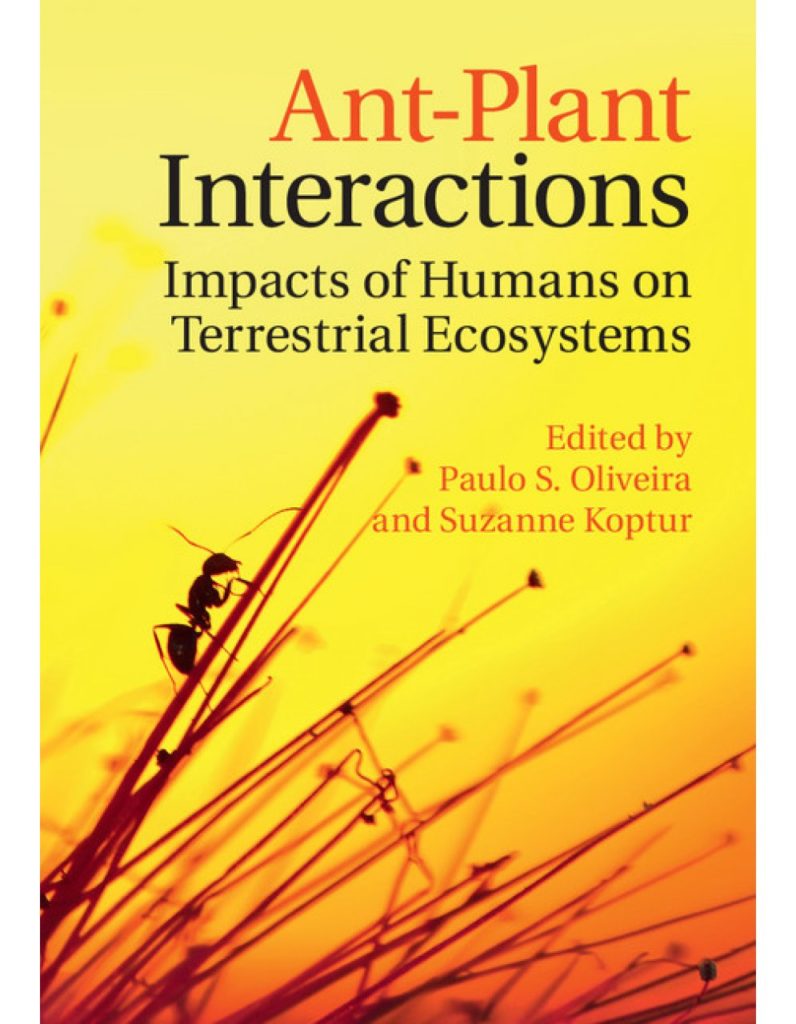
A Book review by Aaron M. Ellison 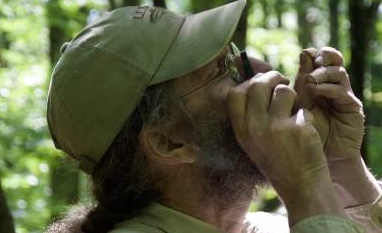
Oliveira, P.S. & Koptur, S. (Eds.) 2017: Ant-plant interactions: impacts of humans on terrestrial ecosystems. – Cambridge University Press, Cambridge, UK, XIX + 431 pp; ISBN 9781107159754 (hardback; alkaline paper), US $84.99, EU €~73.00; Kindle E-book, US $68.00, EU €~40.00.
I first became conscious of the ecological complexities of ant-plant interactions just shy of thirty years ago when I was a post-doc at La Selva Biological Station in Costa Rica. I was working on responses of understory shrubs in the family Melastomataceae to treefall gaps and spent a lot of time learning how to distinguish among the more than 50 species of melastomes then known from La Selva. The first couplet in the typewritten, multiply-photocopied, and faded artificial key was the presence or absence of domatia, some of which housed mites and others of which housed ants. Most every ant I came across in the domatia of myrmecophytic Conostegia, Clidemia, and Tococa was some species of Pheidole. From discussions with various myrmecologists who passed through La Selva that year, including Mike Kaspari, Leanne Alonso, and E.O. Wilson, I learned that all the Pheidole species I had collected from the melastomes were generalists, dashing my hopes of discovering some previously unknown coevolved and specialized ant-plant mutualism.
Reading Ant-plant interactions: impacts of humans on terrestrial ecosystems, the latest entry into the ever-growing library of books on ant-plant interactions, suggests that there was scant likelihood of my having found a specialized ant-plant mutualism at La Selva. As Martin Heil and Marcia González-Teuber summarize in their Perspective chapter, most ant-plant mutualisms are facultative, especially among plants that secrete extrafloral nectar (EFN) and the ants that collect it. They argue that most ant-plant mutualisms are “by-product” mutualisms: Each partner trades a “cheap” service for something of greater value. Secretion of EFN is metabolically inexpensive, and in return for feeding ants, the plants get them to swarm all over and in the plants. The ants, in turn, get valuable food simply for being ants: stinging or biting anything that comes close.
Even among ant-plants that provide domatia, multiple species of ants can use them, including the guild of ants living in the well-known ant-acacias discussed by Todd Palmer and Truman Young in their chapter. Nonnative (often “invasive”) ants also can supplant native ones in EFN-associated interactions and in thorns of Acacia drepanolobium; one consequence of these replacements is the reduction in protection of the plants from other herbivores by the ants (chapter by Joshua Ness and David Holway; see also Ness & al. 2013, Riginos & al. 2015). Further, many ant-plants are early-successional species, not just tolerant of, but often favored by, just those environmental changes common in human-dominated ecosystems: deforestation, road construction, urbanization, fire, and conversion of savannas and grasslands to agriculture.
Unlike the other books on the ant-plant interactions shelf (Buckley 1982, Beattie 1985, Huxley & Cutler 1991, Rico-Gray & Oliveira 2007), Ant-plant interactions: impacts of humans on terrestrial ecosystems places them in the context of ongoing anthropogenic change of the biosphere (Ellis 2015). Although the subtitle of Ant-plant interactions is somewhat misleading (it’s only about impacts of humans on ant-plant interactions), the importance of “the big three”: habitat alteration (fragmentation, deforestation, agriculture, forestry); climate change; and redistribution of species (i.e., “invasives”) on ant-plant interactions (mostly mutualisms but also leaf-cutting) threads through all twenty of the chapters.
These chapters are divided into six sections: on landscape fragmentation (four chapters); myrmecochory (three chapters); defense (four chapters); invasive ants (four chapters); applied ecology, focusing on agroecosystems and restoration (three chapters); and two overview perspectives close out the book. These chapters are gold-mines of data; many include comprehensive, multi-page tables of important species, their interactions with plants, or summaries of anthropogenic impacts, all of which rarely would make it out of supplementary material in a journal article. Most chapters conclude with open questions and directions for future research, and reference lists are self-contained within each chapter. Although the latter makes it easier for the publisher to sell individual chapters electronically, the not unexpected overlap among citations adds modest length to the book.
The main messages of the book are aptly summarized in the closing chapter. Andrew Beattie titled his chapter “Why study ant-plant interactions?”, but before answering it, he reminds us that the human population is expected to reach 10 – 11 billion by the end of this century and that we are beset by pollution, pandemics, global warming, land degradation, overconsumption, and an ongoing mass extinction of all the species that are not us. Given this context, do we have the time or the right to study ant-plant interactions? Not surprisingly, he answers affirmatively, as ants are central to four classes of ecosystem services identified by the Millennium Ecosystem Assessment (2005): regulating, provisioning, supporting, and cultural services. Of course, even though ants are at the center of his “ant-thropocentric” view of the world (modified from Rastogi 2011), it’s really an anthropocentric view of the world: All those ecosystem services are services for us, not for the ants or plants. Even though continued study of ant-plant interactions provides insights into fundamental ecological and evolutionary theory, the chapters in this book – and Beattie’s summary – emphasize the services we get from ants: measuring environmental degradation; indicating restoration success; potential for biological control or other crucial services in agroecosystems; and the supporting services that keep us alive (soil formation, nutrient cycling, and decomposition). This utilitarian perspective on ants, ant-plant interactions, and biodiversity may make sense in the near term, but in the longer term, we will only conserve biodiversity if we value it for its own sake, not for what it can do for us (Norton 1987). In that light, the most important aspect of Ant-plant interactions: impacts of humans on terrestrial ecosystems is that it presents the richness and diversity of ant-plant interactions, which will persist and continue to evolve, even if we are not here to witness them.
References
Beattie, A.J. 1985: The evolutionary ecology of ant-plant mutualisms. – Cambridge University Press, New York, X + 182 pp.
Buckley, R.C. 1982: Ant-plant interactions in Australia. – W. Junk, The Hague, X + 162 pp.
Ellis, E.C. 2015: Ecology in an anthropogenic biosphere. – Ecological Monographs 85: 287-331.
Huxley, C.R., Cutler, D.F. & (Eds.) 1991: Ant-plant interactions. – Oxford University Press, Oxford, UK, XVIII + 601 pp.
Millennium Ecosystem Assessment, M. 2005: Ecosystems and human well-being: A framework for assessment. – Report of the Conceptual Framework Working Group of the Millennium Ecosystem Assessment.
Ness, J.H., Morales, M.A., Kenison, E., Leduc, E., Leipzig-Scott, P., Rollinson, E., Swimm, B.J. & Von Allmen, D.R. 2013: Reciprocally beneficial interactions between introduced plants and ants are induced by the presence of a third introduced species. – Oikos 122: 695-704.
Norton, B. 1987: Why Preserve Natural Variety? – Princeton University Press, Princeton, NJ, pp.
Oliveira, P.S. & Koptur, S. 2017: Ant-plant interactions: impacts of humans on terrestrial ecosystems. – Cambridge University Press, Cambridge, UK, XIX + 431 pp.
Rastogi, N. 2011: Provisioning services from ants: food and pharmaceuticals. – Asian Myrmecology 4: 103-120.
Rico Gray, V. & Oliveira, P.S. 2007: The ecology and evolution of ant-plant interactions. – University of Chicago Press, Chicago, IL, XIII + 331 pp.
Riginos, C., Karande, M.A., Rubenstein, D.I. & Palmer, T.M. 2015: Disruption of a protective ant–plant mutualism by an invasive ant increases elephant damage to savanna trees. – Ecology 96: 654-661.


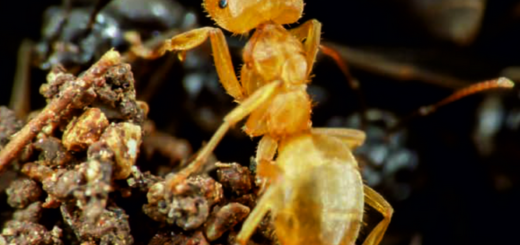
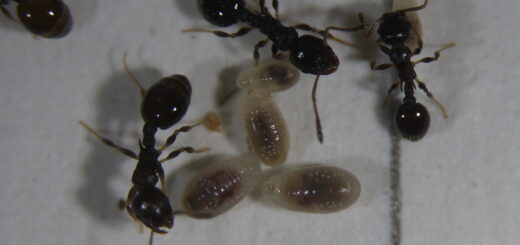
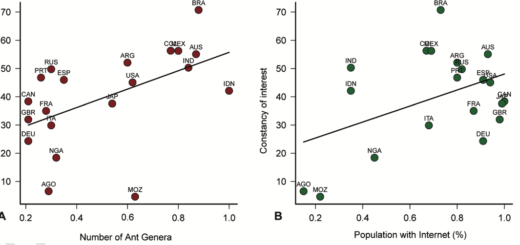
Recent Comments